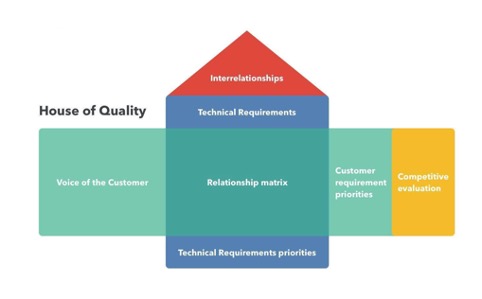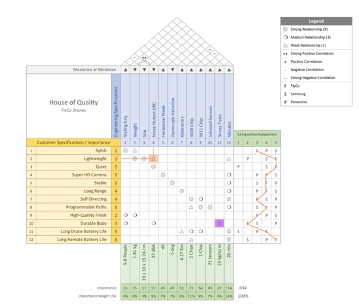The Demogorgon of innovation?
“This technology will revolutionize the world!”
“This technology will revolutionize the world!” Here it is, the typical starting position of the innovator, ranging in more or less any field, from cells to satellites.
Innovators’ passion often goes beyond technological, commercial and organizational obstacles, catapulting the project into a future and applicative dimension that seems to be there, it seems to be at your fingertips. All of this has got magic in it, but we must reveal it: it’s not enough.
Let’s start with a quote by Mike Tyson that is very famous in the startup context. He once said: “Everyone has a plan before getting punched in the face”.
Well, in Day One we have already taken some punches and, for this reason, we can announce without delay that the worst “demolition bully” of innovations and business promising adventures is always him: the market.
The curious fact, however, is that the market, the main executioner of many startups, at the same time, can also prove to be the greatest ally, with a coup de theater that has made the fortune of the best DeepTech startups around the world.
THE STRATEGIC MARKETING CHARTER
Ok, I have an idea, I have a new technology and I want to bring a revolutionary product to the market.
“How can I do?”
Philip Kotler has taught us that Strategic Marketing is a great way to define your Value Proposition and your competitive advantage; and in order not to sing your own praises, he highlights that our ideal customer must provide the key information to develop a winning solution and must somehow tell us that we are digging right where the big X on the map is.
Now, he makes it sound so easy and indeed it is like preparing a dessert if you are Iginio Massari. Well, in this case, if you are not Kotler, then the recipe is more complicated and goes through the following macro-steps:
- The collection of information;
- The analysis and processing of what has been collected;
- The synthesis and interpretation.
Let’s try to understand better what it is.
THE COLLECTION OF INFORMATION
When we talk about information gathering, we are referring to a very thorough research or study phase that aims to find as much information as possible on the battlefield (the market). We must learn to know it and to do so (take a pen and paper as I am about to tell you the first ingredients of our recipe!) we need to study:
- the ideal application scenario (or scenarios) for our solution. In practice: in which contexts could my solution play a useful role?
- The dangerous mythological creatures that populate the market: the competitors. Who am I? What do they offer? How do they satisfy the same need?
- “Public’s help”: the end users. Interactions, interactions, interactions!!!
Who can describe a problem better than someone who actually has experienced it?
From these interactions you will learn a lot … sometimes even that your solution, as it was originally thought, is of no use to anyone. It’s scary, but it’s a useful feedback when you are still in an early stage of development.
This is why we especially focus our work on this aspect of listening, in line with the so-called User-Centered Design. We’re talking about a US import methodology that proposes a user centered product development process to create a solution that can best solve a real need.
Are you wondering what you’re going to do now with all this data? Don’t panic!
THE HOUSE OF QUALITY
The House of Quality (hereinafter, HoQ) is a Japanese import tool, which is part of the Quality Function Deployment. It allows to obtain clear inputs and information on the characteristics that the new product will have to present in order to effectively respond to the wishes of the end users.
How? Through a very intelligent graphic synthesis – in the shape of a house, indeed – of all the data collected, thus giving a nice sprint to the (dreaded) decision making phase.
In other words, it allows you to translate stakeholders’ feedback (and the crazy and intense study done before) into technical specifications.

How and why should I use it?
We immediately respond with the most concrete thing: a practical example!
As part of the project MARILIA (Horizon 2020), of which we are partners, we had two tasks:
- to understand the best configuration for a new microbiological water analysis system;
- to define the inputs to be returned to the R&D team in order to direct the product development in the optimal direction.
PHASE 1
First, we studied the context and we started in particular from the analysis of the application scenario at issue. Therefore, we dedicated a lot of time and energy to a thorough study and we also collected as much information as possible in order to better understand the world of microbiological analysis of water.
The goal was to reconstruct how it is currently carried out, with what methodologies, timing and performance (expected and real); furthermore, we analyzed all the regulatory aspects governing this area, the necessary certifications, the procedure to follow for the approval of a new analysis system, etc.
PHASE 2
At the same time, this set of information has allowed us to examine the panorama of competitors, that is, all those alternative methodologies that in fact meet the same need. The goal was to understand if and how these solutions were able to really satisfy the requests of end users and, consequently, identify any limits or risks associated with the use of these methodologies. Clearly, we are still talking about innovation, therefore the study of competitors has also been extended to the analysis of innovative trends in the field. That is to say: in what direction is the sector moving? Which methodologies have been abandoned and why?
PHASE 3
After the collection of information on the scenario and competitors, it followed the reorganization and data processing phase.
In general, this means that studying is not enough. It is necessary to understand, analyze, intuit and know how to connect seemingly disconnected aspects and concepts, until you have sufficient elements to produce your own preliminary idea or intuition about what the best configuration for our technology could be.
PHASE 4
The next step was the “validation by the end users”. In other words, we needed to gather feedback from our potential stakeholders with the aim of validating what was understood up to that point about the context, collecting feedback on the systems currently in use and, above all, seizing their wishes.
After all, who better than them could explain how the world of microbiological analysis of water really works?
What we got from these interactions was decisive: it allowed us to understand what were the aspects on which it was really worth concentrating resources in the product development phase, to know other essential regulatory requirements in order to be able to operate in the sector, the reference parameters, etc.

Example of HoQ for smartphones. Source: https://www.marketing91.com/house-of-quality/
How did we actually arrive at these conclusions?
How did we process all these data in order to be able to return clear and quantitative inputs to the R&D team?
Keep calm and use the House of Quality!
The HoQ matrix offers, in fact, a very clear and effective solution: it is made up of a series of sections, each one of those is dedicated to the synthesis of data/results obtained on a specific theme. In particular, we have:
– one dedicated to the inputs received from potential consumers/stakeholders;
– two sections dealing with competition (it must be properly examined from different points of view);
– one relating to the specifications of our product in question;
– two more sections dedicated to the relationship between product specifications and consumers’ requirements, on the one hand, and between the specifications themselves, on the other.
In the lower part of the house we will find, among others, also some data relating to our current performance and those expected.
In general, the HoQ doesn’t have a “rigid” structure. This means that some sections or individual items within them can be adjusted according to the specific needs required by the product in question. In any case, the one indicated above represents a synthesis of the structure that we have adopted in the MARILIA project and it’s conforming to the classic one.
Having distributed and interpreted the data with the Hoq enabled us to reach our goal, that is, obtaining the ideal target performance (e.g. cost, analysis time, accuracy, etc.) that the R&D team must be able to achieve in order to propose a competitive solution for that specific application scenario.
As you may have guessed, knowing how to organize the sections of the house and all this huge set of information within it is crucial. As it is also knowing how to interpret it at a later time (otherwise we would have a fantastic House – but without quality – only useful to color as an effective antistress therapy).
Don’t worry, we’re here to help you! And above all, we will be happy to share with you other experiences in which the use of Hoq was decisive!
SO, WHAT DOES THE HOUSE OF QUALITY TEACH US?
1 – NEVER FORGET THE CONTEXT!
Harking back to what was said at the beginning, the idea itself is not enough! It is necessary, of course, but it is not enough to win. There’s a market and there are players and rules. And above all, there are all the final consumers – actual or potential – with specific needs that are by no means easy to understand. There are expressed and unexpressed needs and those who conduct strategic marketing activities know well how important they are. And the house of quality emphasizes this once again.
2 – THE END USER IN THE MIDDLE!
Choosing the right stakeholders to talk to, understanding what to ask and how to do it, knowing how to listen and fully understand their needs is not an easy job. Again, the HoQ teaches us that the so-called “voice of customer” deserves the first place among the innovators’ priorities: it’s right from the requirements indicated by the potential stakeholders that the innovative technical inputs for the R&D team start.
3 – INTEGRATION, EFFECTIVENESS AND EFFICIENCY!
HoQ was born with a clear goal: to do things well, just one time and by combining everyone’s energies. What does it mean? In addition to what has already been said in point 1, this means working to the maximum – providing the work team with transversal skills – without running the risk of having to repeat the process several times, thus minimizing the margin of error.
4 – BUT FIRST: QUALITY!
It makes no sense to wonder if the quality offered is in line with the one required when the production process has reached the end! Or rather, you can do it if you really insist and you ardently want to take the risk of discovering later on that you should have steered production in a different direction. The mistake lies in believing that quality only regards the concept: “I’ve done what was planned by the book”, but forgetting the crucial question: “Does what I’ve planned satisfy a real need?”.
ULTIMATELY, WHAT IS THE ADDED VALUE THAT THE HOQ GIVES US?
We answer this question with a quote that embodies the deeper essence of marketing:
“The goal is to create a product that sells, not to sell a product”.
In essence, this means contributing to the development of the ideal product that sells itself.

